| |
|
|
|
A tiny house, a place to live, a gift from Pachamama
|
|
| |
|
|
|
|
|
| |
|
This tiny home is near Capilla del Monte, a small city in
Cordoba, Argentina. It was built one summer with occasional
help from friends by
Jan, Andrea
(and their baby Lola). The
stem walls are made from dry stone collected from the land, or as
Andrea would say from
Pachamama (Mother Earth). The frame of the house is made from
flexible branches of the
pepper tree [known as the Aguaribay in Argentina] all bound
together with string. |
|
|
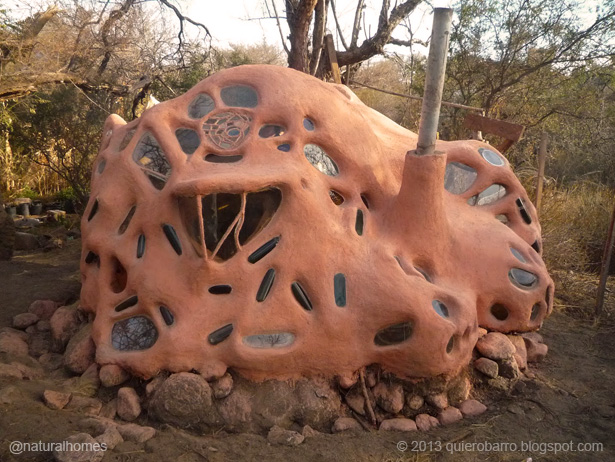 |
|
| |
|
|
|
|
|
|
|
|
|
|
|
|
 |
|
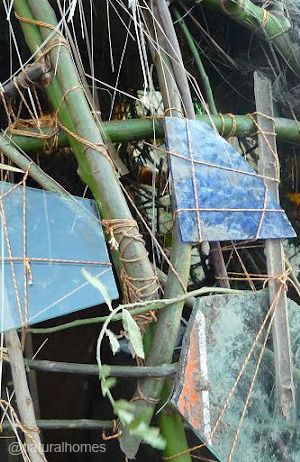 |
|
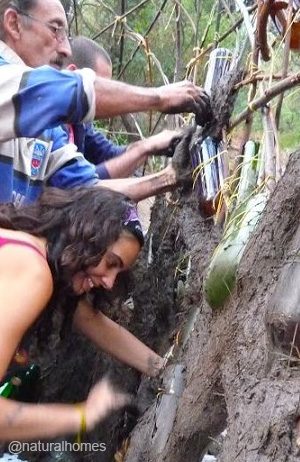 |
|
| |
|
|
|
|
|
|
|
|
|
|
|
|
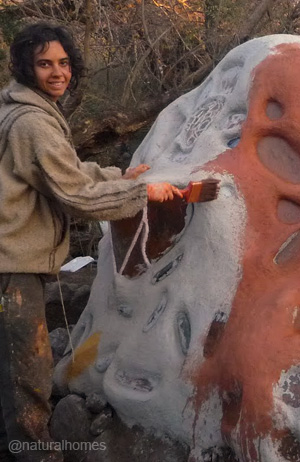 |
|
When you build in this way the walls are loose and
flimsy during construction. This allows you to adapt the shape of
the building to your needs as it takes form and you start to
understand the space you are creating. This way of building is
referred to by
Alexander in
Pattern No.208, 'Gradual Stiffening'.
Jan and Andrea fixed bottles and sheets of
broken glass with string to the frame of branches, later stiffening
the frame with cob, a mixture of clay, sand and straw.
To protect the exterior from rain and moisture the cob was
plastered with
one part slaked lime
to three parts
sand. The walls were then painted (left) with
cactus starch (right) mixed with slaked lime
and iron oxide pigment. The
areas of the house where water might collect, like the
horizontal parts of the roof, were protected with
melted beeswax.
|
Jan and Andrea's home is a similar design to
Benji's
tiny house in France which is made from branches, clay,
lime and old woollen jumpers. |
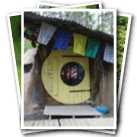 |
|
|
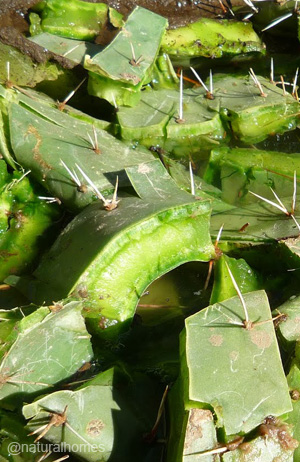 |
|
|
|
|
|
|
|
|
|
For those who built this tiny home, and the few
lucky enough to visit, it touched something deep inside their
psyche satisfying their psychological need for shelter. It's part
of Alexander's pattern language
No.117, 'Sheltering Roof'. The roof shelters, embraces, covers
and surrounds the process of living. A dome home like this
achieves that sense of shelter because the roof actually is the
living space. However the roof and walls in a dome are the
same structure, but they have to perform very different functions.
Apart from the psychological need for shelter the roof must also
perform the physical task of protecting the house from rain. A
dome home is particularly vulnerable to rain, especially a
naturally built one. Jan and Andrea used beeswax to protect their
home, but that is a short term solution or one that needs constant
and regular maintenance. Sadly this tiny house did not survive the
Argentinean rains. Dome homes are really only suitable for arid
and semi-arid climates where rainfall is minimal. |
|
|
|
|
|
|
|
|
|
|
|
|
|
|
|
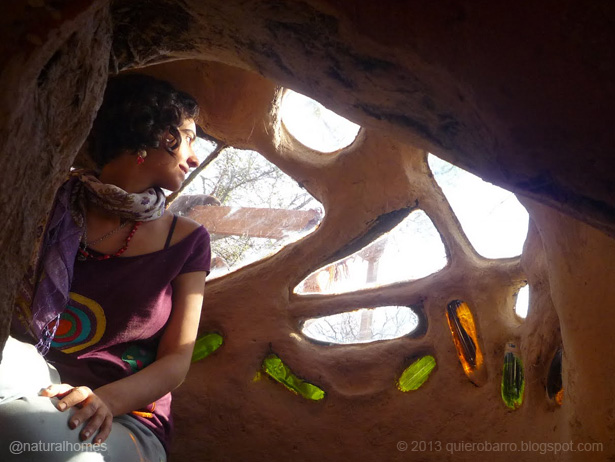 |
|
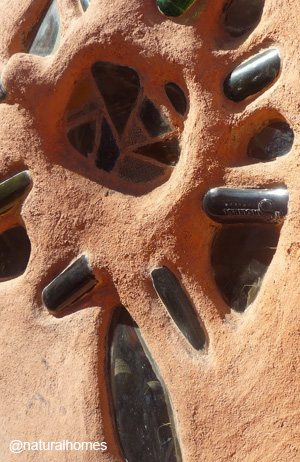 |
|
|
|
|
|
|
|
|
|
|
|
|